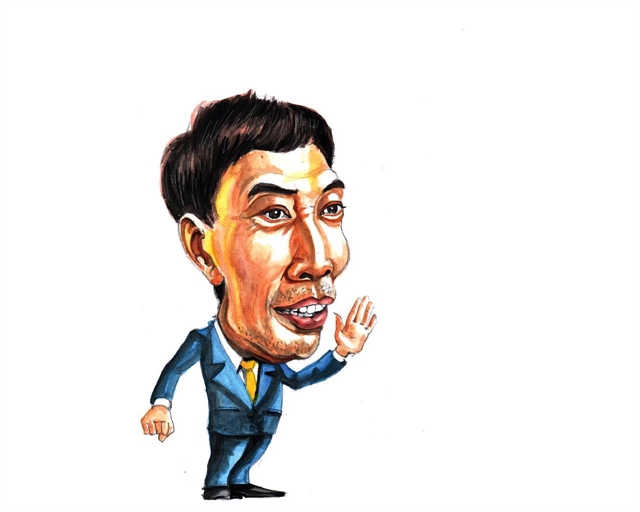Private investment expansion is good, but not enough to sustain economic growth
by ,http://vietnamnews.vn/economy/536175/private-investment-expansion-is-good-but-not-enough-to-sustain-01 October 2019 Last updated at 08:29 AM


* Võ Trí Thành
About 102,300 businesses registered for new establishment in the first nine months of this year, with total registered capital of VNĐ1.29 quadrillion (US$55.4 billion), up 5.9 per cent in volume and 34 per cent in value against a year earlier.
On average, newly-established companies register capital of VNĐ12.6 billion ($541,000) each, up 26.6 per cent year-on-year, data released by the General Statistics Office (GSO) on Saturday showed.
These numbers, together with stable increase of additional capital pumped in the economy by existing enterprises, have demonstrated the activeness and solid confidence of businesses in the market.
The private sector is obviously playing a more important role in the economy, as well as making a bigger contribution to manufacturing, import-export and investment activities.
In terms of investment, in the last five years, investment by the non-State sector accounted for the largest proportion of total realised investment capital, between 38 per cent and 43 per cent.
The first nine months of this year continued following this trend.
Investment of the non-State sector made up 45.3 per cent of total realised investment capital in nine months ending September. The investment capital contributed by this sector also reached the highest growth rate of 16.9 per cent.
Meanwhile, investment under the State budget made up 31 per cent, with capital rising just 3 per cent year-on-year. Investment of the foreign invested sector occupied 23.7 per cent with capital value growing 8.4 per cent.
GSO data showed investment capital from the State sector as a percentage of GDP has declined steadily in the past few years, from more than 40 per cent in 2012 to 38 per cent in 2015 and 33 per cent last year.
Its capital investment growth has also been the lowest in the 2015-19 period.
Besides export and retail sales of goods and services, total national investment is crucial to ensure a stable economic expansion of more than 6.5 per cent per year as per the Government’s target.
In the last five years, total national investment has maintained a reasonable proportion of around 33 per cent of GDP. However, as investment by the State sector has improved little over the years, the private sector (non-State and foreign direct investment) has become the main driver.
The rapid and robust development of the private sector has been driven by strong support of the Government with many policies aiming to provide enterprises with the most favourable conditions to do business.
In both law and national leaders’ speeches, the private sector is acknowledged to be key driver of Việt Nam’s economic growth. A lot of measures have been taken drastically to improve the business and investment environment.
In addition to a stable macro-economic situation, deeper integration of Việt Nam’s economy into the world with many free trade agreements (FTAs) being signed, especially the CPTPP and EU-Việt Nam FTA, have strengthened confidence of businesses in the national economy, as well as attracting FDI inflows.
Meanwhile, public investment has lagged behind.
Public investment spending includes investment under the State budget, loans (mainly Official Development Assistance, Government bonds) and equity of State-owned enterprises. Of which, spending on infrastructure development (involving State budget capital) has been slow.
The Ministry of Finance last week reported public investment spending in the first nine months reached VNĐ192 trillion, far behind targets of both the National Assembly and Prime Minister.
Many reasons were given to explain sluggish public investment spending, such as overlapping regulations in many laws, complicated disbursement procedures or the lack of determination of the leaders of State authorities.
In a market-based economy, appropriate public investment, especially expenditure on infrastructure, can play a very important role as it can generate a positive spill-over effect in the economy through boosting demand, creating jobs and drawing more investment from the private sector (crowding in effect).
However, raising public investment spending may be also associated with the risks of getting involved in public debts, budget deficit or discouraging private investment (crowding out effect).
In the last decade, public spending on infrastructure declined significantly, from more than 10 per cent of GDP to a low level of just around 6 per cent at present. Besides the efficiency of the investment, some quantitative studies have shown that public investment on infrastructure should reach around 8 per cent of GDP for it to sustain rather high economic growth.
While ODA capital for infrastructure development is declining steadily, ODA-funded projects are proven to have positive contributions to attract inflows of both private investment and FDI.
There are signs that too low infrastructure investment will create bottlenecks for developing trade and drawing high quality foreign investment.
Many surveys have shown that more and more businesses are complaining about under-developed infrastructure which will raise logistics costs. The media have speculated over the possibility that Việt Nam may overtake China as a new destination for global manufacturing companies. However, disbursement of FDI has not increased much recently, which may indicate limited capacity of the country in absorbing foreign investment. Infrastructure is a big challenge for Việt Nam and if the country has not invested to develop this, it cannot meet the demands of a new wave of companies.
The contribution of the private sector and high-quality FDI inflows are important, thus it requires the continued policies of opening the economy, hastening institutional reforms and improving the business and investment climate.
However, this should be done in line with raising public investment spending, especially investment for infrastructure, to uphold high economic growth in the next decade, in which the Government has set higher targets than the last period, aiming to overcome the middle income trap.
* Võ Trí Thành is a senior economist at the Central Institute for Economic Management (CIEM) and a member of the National Financial and Monetary Policy Advisory Council. The holder of a doctorate in economics from the Australian National University, Thành mainly undertakes research and provides consultation on issues related to macroeconomic policies, trade liberalisation and international economic integration. Other areas of interest include institutional reforms and financial systems.





